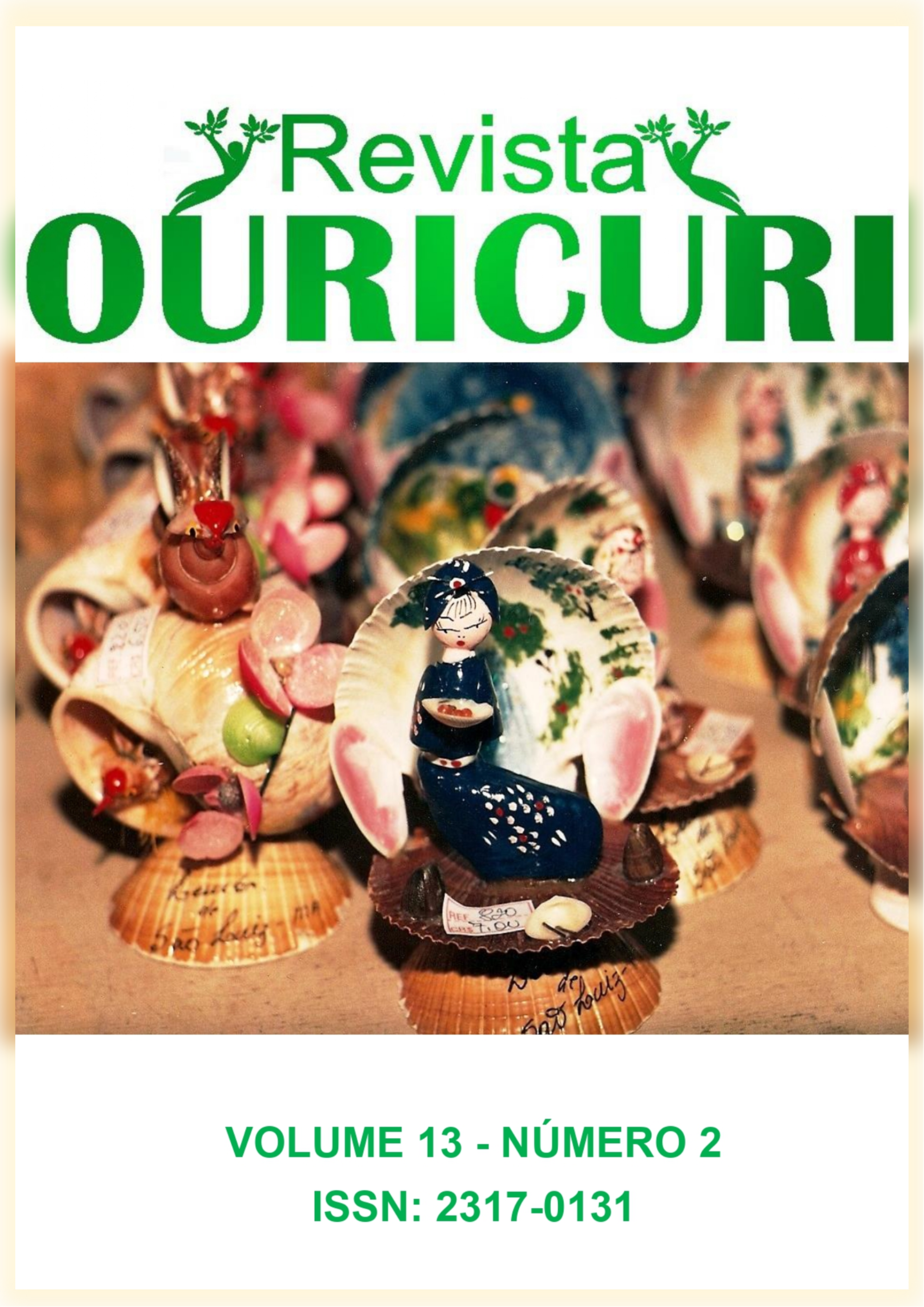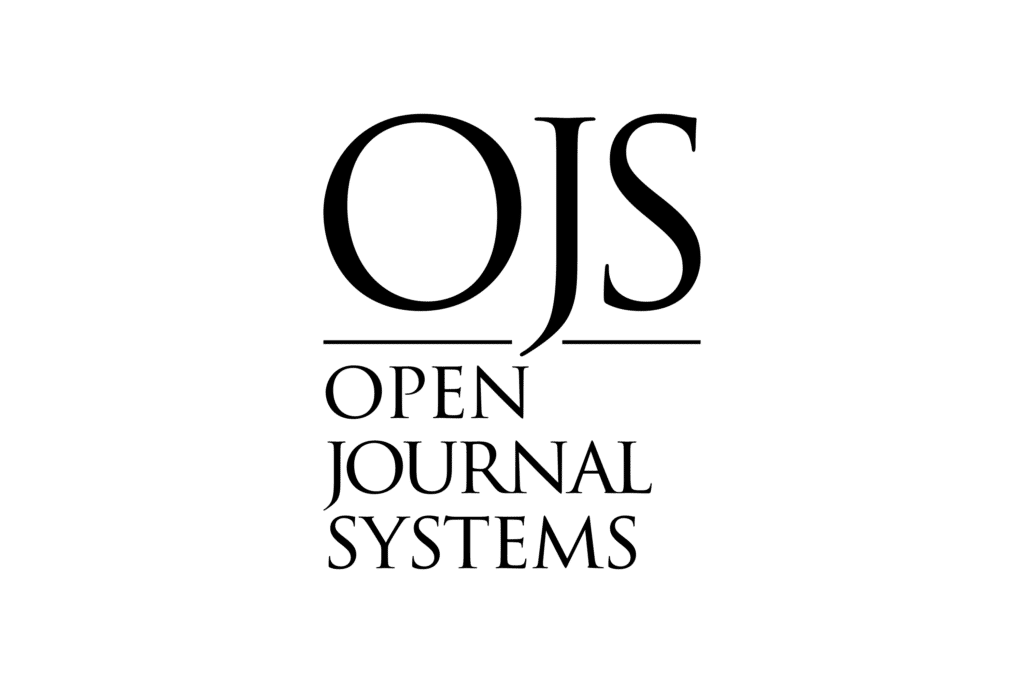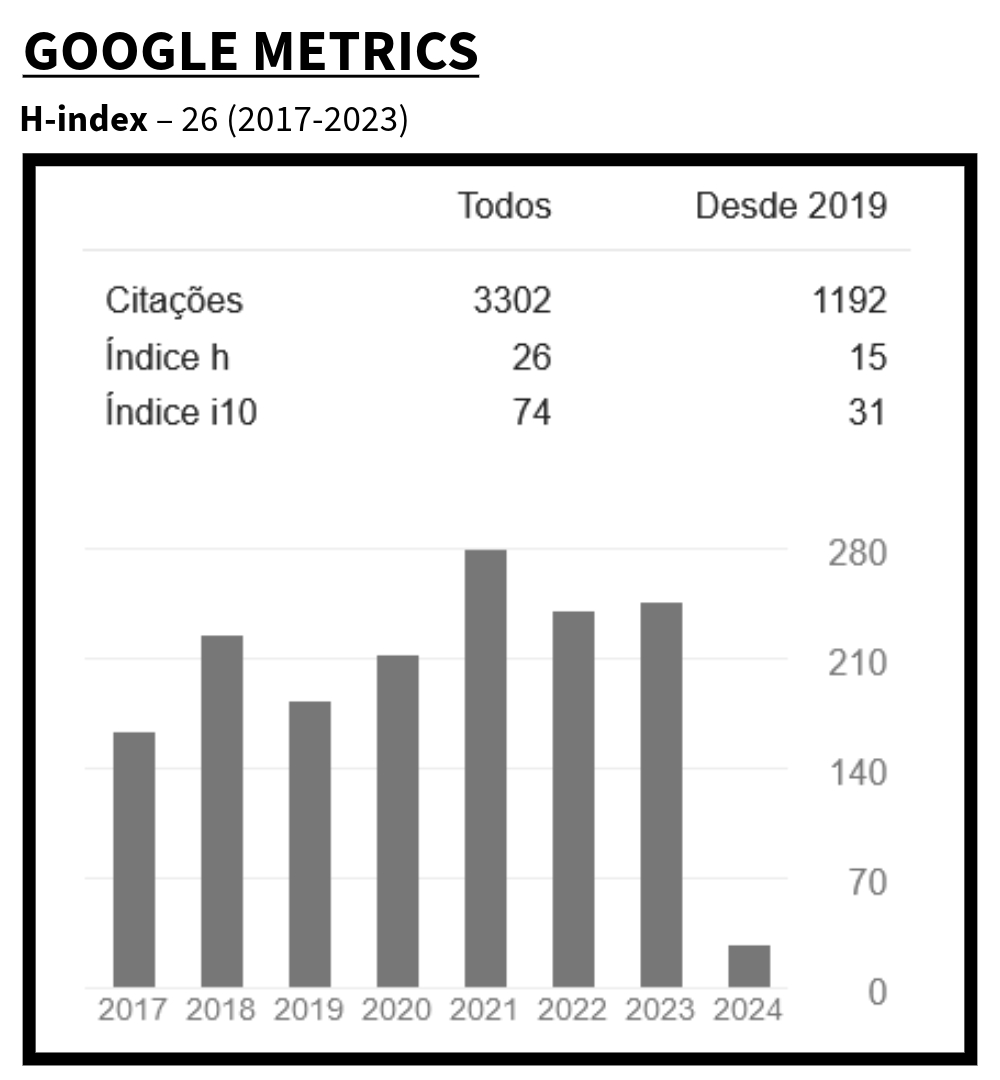Ichtyofauna of Tidepools of two Beaches in the Microregion of Salvador, Bahia, Brazil
DOI:
https://doi.org/10.59360/ouricuri.vol13.i2.a17494Keywords:
visual census; community; Brazilian Northeast; fish.Abstract
This study aimed to analyze the ichthyofauna of tidepools on two beaches in the microregion of Salvador, addressing possible differences in species composition between environments. Monthly samplings were carried out using the visual census technique between September 2017 and August 2018. Each pool was filmed using an underwater camera and the environmental parameters of the water measured. In laboratory, the videos were analyzed and fishes quantified and identified. The tidepools at Praia da Pituba were considered smaller and had higher salinity and conductivity values when compared to the Praia de Itapuã tidepools. The collector curve showed a tendency to curve stability for both locations. Twenty-five species found, one of which was not identified, within 17 families, with the Pomacentridae being the most representative. Nineteen species were common on both beaches, while three species were found only on Itapuã and one species occurred only on Pituba. Abudefduf saxatilis (Linnaeus, 1758) and Stegastes fuscus (Cuvier, 1830) were classified as constant, while Acanthurus bahianus Castelnau, 1855 was classified as accessory on both beaches. The most abundant species were A. saxatilis, Stegastes variabilis (Castelnau, 1855) and A. bahianus in Itapuã and S. fuscus, A. saxatilis and A. bahianus in Pituba. The ordination analysis showed a separation in the composition of the ichthyofauna between the two beaches, with Halichoeres maculipinna (Müller & Troschel, 1848), Halichoeres poeyi (Steindachner, 1867) and S. variabilis more associated with Itapuã and Haemulon parra (Desmarest, 1823), Scartella cristata (Linnaeus, 1758) and S. fuscus with Pituba. This study expanded knowledge about the composition of the ichthyofauna of tide pools in the Salvador microregion beaches, showing that the studied sites need monitoring in order to conserve the species present in these environments considered susceptible and vulnerable to environmental conditions and the action anthropic.
Downloads
References
Ackerman, J. L.; Bellwood, D. R. Reef fish assemblages: a re-evaluation using enclosed rotenone stations. Marine Ecology Progress Series, 206, 227-237, 2000.
Alves, O. F. S.; Cerqueira, W. R. P. Echinodermata das praias de Salvador (Bahia, Brasil). Revista Brasileira de Zoologia, 17(2), 543-553, 2000.
Anderson, M.; Gorley, R.; Clarke, K. PERMANOVA+ for PRIMER: Guide to Software and Statistical Methods. PRIMER-E, Plymouth, UK, 2008.
Arndt, E.; Fricke, R. Intertidal fishes of Mauritius with special reference to shallow tidepools. Biodiversity Data Journal, 7(e36744), 1-44, 2019.
Araújo, M. E.; Paiva, A. C. G.; César, F. B.; Silva, J. C. C. A sutil diagnose morfológica entre as espécies simpátricas Stegastes fuscus e S. variabilis (Actinopetrygii: Pomacentreidae). Arquivos de Ciências do Mar, 36, 37-43, 2003.
Bessa, E.; Dias, J. F.; Souza, A. M. Rare data on a rocky shore fish reproductive biology: sex ratio, length of first maturation and spawning period of Abudefduf saxatilis (Linnaeus, 1758) with notes on Stegastes variabilis spawning period (Perciformes: Pomacentridae) in São Paulo, Brazil. Brazilian Journal of Oceanography, 55(3), 199-206, 2007.
Bittencourt, A. C. S. P. Sedimentação recente na Costa Atlântica de Salvador. Revista Brasileira de Geociências, 5, 46-63, 1975.
Brasil. ‘Instrução normativa IBAMA nº 202, de 22 de outubro de 2008. Dispõe sobre normas, critérios e padrões para a explotação com finalidade ornamental e de aquariofilia de peixes nativos ou exóticos de águas marinhas e estuarinas.’ Disponível em: http://www.icmbio.gov.br/cepsul/images/stories/legislacao/Instrucao_normativa/2008/in_ibama_202_2008_exploracaopeixesnativosouexoticosaguasmarinhas_altera_in_ibama_56_2005_retificada.pdf. Acesso em: 09 de set. 2019.
Campos, C. E. C.; Sá-Oliveira, J. C.; Araújo, A. S. Composição e estrutura de comunidades de peixes nos Parrachos de Muriú, Estado do Rio Grande do Norte, Brasil. Arquivos de Ciências do Mar, 43(1), 63-75, 2010.
Cassamali, A. S.; Cerqueira, L. O.; Nunes, E. T.; Braga, A. A. Caracterização de poças de maré e levantamento taxonômico de macrobentoônicos na praia Costa Azul, em Iriri-ES. Revista Univap, 22(40), 2016. Revista de Biologia Tropical, 62 (Suppl. 1), 373-390, 2014.
Castellanos-Galindo, G. A.; Giraldo, A. Food resource use in a tropical eastern Pacific tidepool fish assemblage. Marine Biology, 153, 1023-1035, 2008.
Castellanos-Galindo, G. A.; Giraldo, A.; Zapata, F. A. Tidepool fish assemblages of Gorgona Island, Colombian Pacific coast: a local and regional comparison.
Castro, P.; Huber, M. E. Biologia Marinha. Porto Alegre: AMGH Editora, 2012.
Cunha, E. A.; Carvalho, R. A. A.; Monteiro-Neto, C.; Moraes, L. E. S.; Araújo, M. E. Comparative analysis of tidepool fish species composition on tropical coastal rocky reefs at State of Ceará, Brazil. Iheringia, Série Zoologia, 98(3), 379-390, 2008.
Dajoz, R. Ecologia Geral. Petrópolis: Vozes, 1983.
Dumaresq, G. M. Assembleias de peixes recifais em poças de maré tropicais: elemento estruturadores e mudanças em sua composição (1999 e 2018). Dissertação de mestrado (Programa de Pós-Graduação em Engenharia de Pesca) - Centro de Ciências Agrárias da Universidade Federal do Ceará, Fortaleza. 2019.
Ferreira, C. M.; Coni, E. O. C.; Medeiros, D. V.; Sampaio, C. L. S.; Reis-Filho, J. A.; Barros, F.;
Loiola, M.; Nunes, J. A. C. C. Community structure of shallow rocky shore fish in a tropical bay of
the southwestern Atlantic. Brazilian Journal of Oceanography, 63(4), 279-396, 2015.
Freitas, M. C.; Vieira, R. H. S. F.; Araújo, M. E. Impact of the Construction of the Harbor at Pecém (Ceará, Brazil) upon Reef Fish Communities in Tide Pools. Brazilian Archives of Biology and Technology, 52(1), 187-195, 2009.
Froese, R.; Pauly, D. FishBase. 2019. Disponível em: https://www.fishbase.de/Nomenclature/ScientificNameSearchList.php. Acesso em: 14 de ago. 2019.
Galvão, T. A.; Nolasco, M. C. Urbanization and coral reefs in Guarajuba Beach, north coast of Bahia, Brazil. Ocean & Coastal Management, 77, 50-58, 2013.
Hammer, O.; Harper, D. A. T.; Ryan, P. D. PAST: Paleontological statistics software package for education and data analysis. Palaeontologia Electronica, 4(1), 1-9, 2001.
Horn, M. H.; Martin, K. L. M.; Chotkowski, M. A. 1999. Introduction. In. Horn, M. H.; Martin, K. L. M.; Chotkowski, M. A. (Eds). Intertidal Fishes: Life In Two Worlds. San Diego: Academic Press, 1999, p.1-6.
Mahon, R.; Mahon, S. D. Structure and resilience of a tidepool fish assemblage at Barbados. Environmental Biology of Fishes, 41, 171-190, 1994.
Metaxas, A.; Scheibling, R. E. Community structure and organization of tidepools. Marine Ecology Progress Series, 98, 187-198, 1993.
Monteiro-Neto, C. M.; Cunha, F. E. A.; Nottingham, M. C.; Araujo, M. E.; Rosa, I. L.; Barros, G. M. L. Analysis of the marine ornamental fish trade at Ceará State, northeast Brazil. Biodiversity and Conservation, 12, 1287-1295, 2003.
Nagelkerken, I.; van der Velde, G.; Gorissen, M. W.; Meijer, G. J.; van’t Hof, T.; den Hartog, C. Importance of mangroves, seagrass beds, and the shallow coral reef as a nursery for important coral reef fishes, using a visual census technique. Estuarine, Coastal and Shelf Science, 51, 31-44, 2000.
Nottingham, M. C.; Cunha, F. E. A.; Monteiro-Neto, C. Captura de peixes ornamentais marinhos no estado do Ceará. Arquivos de Ciências do Mar, 33, 113-118, 2000.
Oliveira, T. B. C. Distribuição da comunidade de peixes recifais em relação a complexidade estrutural bentônica da praia do Paiva – Pe. Monografia (Bacharelado em Ciências Biológicas) -Universidade Federal Rural de Pernambuco, Recife. 2020.
Pastro, G.; Dias, G. M.; Gibran, F. Z. Structure and composition of fish assemblages from São Sebastião Channel tide pools, southwestern Atlantic. Biota Neotropica, 16(3), 2016.
Pereira, P. H. C.; Feitosa, J. L. L.; Chaves, L. C. T. Guia da biodiversidade marinha da APA Costa dos Corais. Rio de Janeiro: Technical Books Editora, 2014.
Perez, I, L, B. Biologia reprodutiva do peixe borboleta Chaetodon striatus (Perciformes: Chaetodontidae) e manutenção em sistema de recirculação. Tese de doutorado (Programa de Pós-graduação em Aquicultura) – Universidade estadual de São Paulo, Jaboticabal. 2019.
Pinheiro, H. T.; Rocha, L. A.; Macieira, R. M.; Carvalho-Filho, A.; Anderson, A. B.; Bender, M. G.; Di Dario, F.; Ferreira, C. E. L.; Figueiredo-Filho, J.; Francini-Filho, R.; Gasparini, J. L.; Joyeux, J. C.; Luiz, O. J.; Mincarone, M. M.; Moura, R. L.; Nunes, J. A. C. C.; Quimbayo, J. P.; Rosa, R. S.; Sampaio; C. L. S.; Sazima, I.; Simon, T.; Vila-Nova, D. A.; Floeter, S. R. South-western Atlantic reef fishes: Zoogeographical patterns and ecological drivers reveal a secondary biodiversity centre in the Atlantic Ocean. Diversity and Distributions, 24(7), 951-965, 2018.
Rosa, R. S.; Lima, F. C. T. Os peixes brasileiros ameaçados de extinção. In. Livro vermelho das espécies ameaçadas de extinção. Brasília: MMA, 2008.
Rosa, R. S.; Rosa, I. L.; Rocha, L. A. Diversidade da ictiofauna de poças de maré da praia do cabo branco, João Pessoa, Paraíba, Brasil. Revista Brasileira de Zoologia, 14(1), 201-212, 1997.
Sampaio, C. L. S.; Nottingham, M. C. Guia para identificação de peixes ornamentais – volume I: espécies marinhas. Brasília: IBAMA, 2008.
Santana, C. B.; Guedes, A. P. P. Distribuição e abundância de duas espécies de peixes-donzelas (Actinopterygii, Pomacentridae) em poças de maré de Salvador, Bahia. Revista Ouricuri, 10(2), 37-47, 2020.
Santos, E.; Pinho, J. A. G.; Moraes, L. R. S.; Fischer, T. O Caminho das Águas em Salvador: Bacias Hidrográficas, Bairros e Fontes. Salvador: CIAGS/UFBA; SEMA, 2010. 486 p.
Schlacher, T. A.; Schoeman, D. S.; Dugan, J.; Lastra, M.; Jones, A.; Scapini, F.; Mclachlan, A. Sandy beach ecosystems: key features, sampling issues, management challenges and climate change impacts. Marine Ecology, 29(1), 70-90, 2008.
Sestini, G. Textural characteres of Salvador beach sands. Boletim da Universidade Federal do Paraná, 8, 1-15, 1967.
Silva, R. I.; Souza-Filho, J. R.; Barbosa, M. A. L.; Rebouças, F.; Machado, R. A. S. Diagnóstico ambiental e avaliação da capacidade de suporte das praias do bairro de Itapoã, Salvador, Bahia. Sociedade & Natureza, 21(1), 71-84, 2009.
Smith, K. J.; Able, K. W. Dissolved oxygen dynamics in salt marsh pools and its potential impacts on fish assemblages. Marine Ecology Progress Series, 258, 223-232, 2003.
Wandscheer, A. C. D.; Baumart, J. S.; Marchesan, E.; Santos, S.; De Avila, L. A.; Soares, C. F.; Pires, M. M. Suficiência amostral para estudos de impacto ambiental sobre a comunidade de macroinvertebrados bentônicos em arrozais irrigados. Ciência Rural, 46(1), 26-29, 2016.
White, G. E.; Hose, G. C.; Brown, C. Influence of rock-pool characteristics on the distribution and abundance of inter-tidal fishes. Marine Ecology, 36, 1332-1344, 2015.
Xavier, J. H. A.; Cordeiro, C. A. M. M.; Tenório, G. D.; Diniz, A. F.; Paulo-Júnior, E. P. N.; Rosa, R. S.; Rosa, I. L. Fish assemblage of the Mamanguape Environmental Protection Area, NE Brazil: abundance, composition and microhabitat availability along the mangrove-reef gradient. Neotropical Ichthyology, 10(1), 109-122, 2012.
Downloads
Published
How to Cite
Issue
Section
License
Copyright (c) 2023 Jaiane Pereira de França, Ana Paula Penha Guedes

This work is licensed under a Creative Commons Attribution-NonCommercial 4.0 International License.
Authors who publish in this journal agree to the following terms:
a) Authors maintain copyright and grant the magazine the right of first publication, with the work simultaneously licensed under the Creative Commons Attribution License which allows sharing of the work with recognition of authorship and initial publication in this magazine.
b) Authors are authorized to enter into additional contracts separately, for non-exclusive distribution of the version of the work published in this journal (e.g., publishing in an institutional repository or as a book chapter), with recognition of authorship and initial publication in this journal.
c) Authors are allowed and encouraged to publish and distribute their work online (e.g. in institutional repositories or on their personal page) as this can increase the impact and citation of the published work (See The Effect of Open Access).













 B1 (2017-2020)
B1 (2017-2020)



















